Amazon Prime Day 2022 is quickly approaching, taking place for 2 days, July 12-13. As shoppers make their lists for long-awaited deals, our Amazon team at Harvest Group has been proactively guiding our clients in preparation for Prime Day over the past several months. For brands participating in Amazon Prime Day 2022 – Harvest Group Amazon Team Lead, Wyatt Sosey, outlines a final checklist for brands to consider in the last two weeks before Prime Day in this blog post.
“Prime Readiness” Check for Brands
In general, brands should start finalizing Prime Day plans ~6-8 months beforehand to ensure they have sufficient inventory, pricing and margin analysis, and correct approvals in place before Amazon starts sourcing deals.
As a best practice, brands should run through a “Prime readiness” check before Prime Day. This includes:
- Optimizing PDP (Product Details Page) and Brand Store content
- Ensuring strong inventory positions across Amazon’s FC (Fulfillment Center) network
- Aligning your Amazon advertising strategy with your Prime Day goals
Harvest Group recommends completing this check at least two weeks prior to the big event to avoid any last-minute issues around catalog, content, or category assignments that can inversely affect your business during a crucial time.
3 Best Practices for Amazon Prime Day
- Ensure content is optimized – The increase in traffic creates an opportunity to convert customers once they land on your product’s page. Given the increase in traffic, it is important to ensure that your content (bullet points, A+ content, title, and imagery) is all optimized.
- Secure strong inventory positions – The #1 rule on Amazon is to “stay in stock”. This rule doubles in importance during marquee events like Prime Day. Prime Day is an opportunity to convert customers that are excited to find a good deal and purchase. Being in stock is a crucial piece to capturing those sales and driving your business.
- Aligning your advertising strategy – Prime Day means a massive jump in traffic for Amazon’s marketplace. Brands should anticipate increases in competitor spend rates and bids. We recommend aligning budget increases with brand goals for Prime Day, planning to increase budgets/spend by the % lift in sales or traffic a brand is hoping to achieve. We also recommend focusing less on ROAS (which will likely drop) and more on NTB (New To Brand) and customer LTV (Life Time Value) during this event.
Insights and Learnings from Prime Day
There are a few key focuses, outside of driving sales, that Harvest has for clients participating in Prime Day.
Test and learn – Every category, brand, and product line react differently to promotions. Some are more elastic during promotional events while others remain consistent. Learning how your products react allows you to maximize your sales for Prime Day and improve your overall promotion strategy for future events.
Track the “splash” and the ripple effects – Prime Day has a much bigger impact than driving sales on the specific day and exact promotional products. The ripple effects of deals inform content, variations, pricing, advertising, and future promotional strategies. It is important to track other key metrics that might not seem relevant to your specific Prime Day promotions to understand how the broader impact on your business. The week of deals is sure to deliver an increase in traffic and customers coming to your PDP’s, but if played correctly, can lead to much stronger overall business coming out of the event.
Should Your Brand Participate in Prime Day in the Future?
For the brands that missed Prime Day and want to take advantage of the next big event, Amazon is having another “Prime Fall deal event” in Q4. This is the first time Amazon is having another event before Black Friday and Cyber Monday. Brands need to submit their recommended Lightning Deals by July 22nd, 2022 for the deals to be considered.
Looking forward, there are different strategies that brands use when approaching a marquee event like Prime Day. Strategies need to align with the brand itself as well as the core retailer strategies and should be evaluated with your internal team and/or agency partner. A few strategies include:
- Capturing new brand customers – A strategy focused less on profitability and more on capturing new-to-brand customers. This strategy relies on knowing your product’s LTV and factoring that into your promotion and advertising strategies.
- New product launch – New items or recently created items aren’t eligible to be included in Prime Day Lightning Deals due to not reaching a velocity threshold that Amazon sets. Although, brands with newly launched products can still benefit from the increased traffic Prime Day brings through a strategy focused on driving awareness to newly launched products to ramp them up and fuel the flywheel quickly. This strategy is focused on taking advantage of the increased traffic to the newly launched products through content and Advertising versus running specific deals since Amazon has eligibility requirements for new products.
- All-tides rise – A strategy focused on spreading promotions and traffic across retailers to create an “all tides rise” situation. This strategy relies on product assortment, advertising, and cross-retailer strategies.
- Overall flywheel approach – A strategy focused on creating a sustained impact on the overall Amazon business by driving the flywheel. This strategy is the most comprehensive and relies on all key aspects of the Amazon business.
How is Harvest Group helping Amazon clients navigate Prime Day?
- Ensuring “Prime Readiness” – Harvest completes a “readiness” check for our clients to ensure that their business is ready to not only take advantage of the increased traffic to their business during Prime Week but also reap the benefits of driving the flywheel after the marquee event.
- Promotional Strategy – Harvest partners with our clients to develop a data-driven promotional strategy to maximize Prime Day potential. Additionally, we understand the impact that PD has on future marquee events and how to build momentum from Prime Day to lead into a strong Holiday season.
- Operational Efficiency – Harvest uses an internal tool that leverages multiple forecasting methods to arrive at the optimal inventory allocation for promotional products. We then work with the client to provide a long enough lead time, factoring in their manufacture prep time, to get the inventory distributed across Amazon’s FC (Fulfillment Center) network.
Marquee events like Amazon Prime Day require a lot of insight, planning, and strategy to participate effectively. If you’re interested in learning more about Harvest Group’s omnichannel approach for brands at Amazon, reach out to us at hello@harvestgroup.com or fill out our Contact Us form here.


